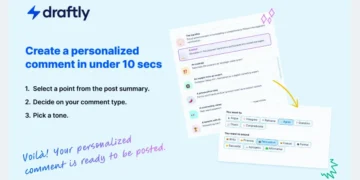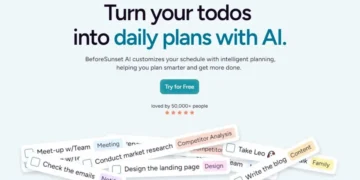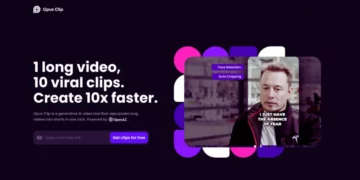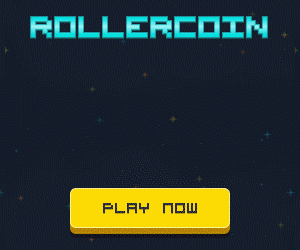With the next Bitcoin halving set to occur in 2024, miners face leaner rewards from validating transactions. In response, miners are exploring diversification into more profitable opportunities like providing computing power to the booming artificial intelligence (AI) industry.
Let’s examine the moves miners are making to tap into AI and cushion the impending blow of halving. We’ll also analyze the strategic reasoning behind this pivot and how well-positioned miners are to capitalize on AI demand.
Bitcoin Halving Cycle and Impact
First, a quick primer on the Bitcoin halving cycle. Halving is a scheduled reduction in the mining block reward that occurs approximately every four years. It cuts the number of Bitcoins awarded to miners for processing blocks in half.
The next halving will likely happen between April and May 2024, reducing the current 6.25 BTC block reward to 3.125 BTC. Halving limits Bitcoin supply over time to maintain scarcity.
For miners, halving directly impacts profitability. With block rewards cut in half, their key revenue source is slashed unless Bitcoin’s price rises enough to offset lower yields. Profit margins are further squeezed if network mining difficulty and hardware costs increase.
Many miners are proactively seeking fresh income streams before leaner times hit in 2024.
Pivoting Mining Rigs to Power AI Compute
Bitcoin mining requires massive computing power, specifically application-specific integrated circuit (ASIC) rigs designed for crypto mining or graphics processing units (GPUs).
As mining becomes less profitable from halving, miners can repurpose this hardware to provide AI computing services. Both Bitcoin mining and AI model training rely heavily on high-performance GPU/ASICs.
Per JP Morgan, miners like Iris Energy and Applied Digital are already exploring deals to supply compute power to AI companies from their mining rigs.
Funding Expansion Using Bitcoin Reserves
Miners need capital to expand into new territories like AI. JP Morgan analysts note that funding is coming from the sale of newly mined Bitcoin.
In Q3 2022 alone, public miners sold 4,000 more Bitcoins than they mined, tapping into reserves to raise cash for growth. This suggests miners are forward-thinking by re-investing current mining proceeds into more diverse future revenue streams.
Geographical Diversification
Miners are also migrating to regions with cheaper energy and operating costs. With ESG pressures mounting, locales with cold climates and excess energy like Russia are attracting more mining farms with discounted electricity rates.
Diversifying geographically spreads risk while making operations more cost-competitive post-halving when profit margins decline.
Repurposing Surplus GPUs from Ethereum
The shift from proof-of-work mining to staking consensus on Ethereum freed up a glut of capable GPUs. JP Morgan estimates the excess GPU supply could support mining other coins or up to $20 billion in AI compute demand.
AWS and Google Cloud pay up to $15 per GPU hour for AI training. Rather than scrapping Ethereum mining rigs, miners can reuse them to capture lucrative AI compute contracts.
Conclusion
Halving poses a major risk to Bitcoin miners reliant on ever-growing block rewards. But the ingenious move to reinvest mining profits into AI and retool rigs for AI computing perfectly positions them for the Web3 era.
Rather than resisting change, miners are embracing it by cultivating expertise in AI applications from gaming to drug discovery. Their deep intelligence on optimizing GPU/ASIC performance also translates well to machine learning.
By tackling the halving cycle proactively, miners can play a pivotal role in both securing blockchain networks and advancing AI capabilities. Their flexibility and foresight provides a blueprint for adapting and staying relevant amidst technology’s endless cycles of disruption.
Frequently Asked Questions
How will halving impact Bitcoin miners?
Halving will cut miner block rewards in half, squeezing profit margins unless Bitcoin’s price rises proportionally.
How are miners responding to halving?
Many miners are diversifying into AI by supplying compute power from their mining rigs and tapping Bitcoin reserves to fund expansion.
Why is AIcompute attractive to miners?
Both crypto mining and AI training rely heavily on GPU/ASICs optimized for parallel processing, making it complementary.
Where are miners relocating to?
Cold climate regions like Russia with surplus energy and lower electricity costs are attracting more miners.
How does the Ethereum merge impact miners?
The glut of capable GPUs from Ethereum miners provides hardware to support miners pivoting into offerings like AI.
What happens to Bitcoin after all 21 million are mined?
Once all 21 million Bitcoins have been mined, there will be no more new Bitcoins introduced into circulation. However, mining will continue to process transactions and miners will earn fees for securing the network.
Why Bitcoin miners don’t control the Bitcoin ecosystem?
While miners process transactions, Bitcoin’s rules and network are collectively controlled by all users through full nodes that enforce consensus rules. This decentralized structure prevents any one group like miners from unilaterally making changes.
What is the meaning of Bitcoin halving?
Bitcoin halving refers to a built-in mechanism that cuts the block reward miners receive in half every 210,000 blocks, or about every 4 years. This controls Bitcoin’s inflation rate over time.
What is the math problem Bitcoin miners solve?
Miners use computational power to solve complex cryptographic math problems in order to validate blocks of transactions and receive a bitcoin reward in return. This is known as proof-of-work.
What will Bitcoin be worth in 2030?
Estimates vary widely, but some experts predict that if adoption continues growing, Bitcoin could reach over $500,000 per coin by 2030 based on the stock-to-flow model forecast.
What happens to Bitcoin mining every 4 years?
The Bitcoin code is set to halve the mining reward every 210,000 blocks, or roughly every 4 years. This reduces the supply of new Bitcoin introduced into circulation over time.
WARNING: This is an informational article. DiarioBitcoin is a media outlet, it does not promote, endorse or recommend any particular investment. It is worth noting that cryptoasset investments are not regulated in some countries.
They may not be appropriate for retail investors, as the full amount invested could be lost. Please check the laws of your country before investing.
Follow us on our social networks and keep up to date with everything that happens in the Metaverse!
Twitter Linkedin Facebook Telegram Instagram Google News Amazon Store






































